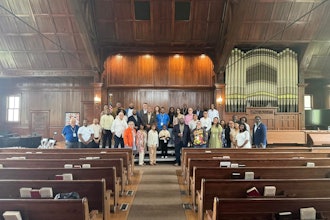WASHINGTON — While career and technical education, or CTE, may have historically been maligned as a “dead end,” a new study based on students in Arkansas shows students who took more CTE classes were slightly more likely to finish high school, attend a two-year college and earn a little more money than those who don’t.
“I think there’s sufficient evidence to suggest Arkansas should continue doing what they’re doing now,” said Shaun M. Dougherty, an assistant professor of educational policy and leadership at the University of Connecticut.
“Students are benefiting from this,” he said, although he acknowledged the need for research on the longer-term impact of CTE.
Dougherty made his remarks Thursday at the Thomas B. Fordham Institute, a policy research organization that focuses on education reform. He spoke in reference to the findings of a new study titled, “Career and Technical Education in High School: Does it Improve Student Outcomes?”
Among other things, the study found that most students in Arkansas — 89 percent — take at least one CTE class, but those who took more CTE or concentrated in certain areas enjoyed better educational and employment outcomes.
More specifically, the study found that:
- Taking one additional CTE course above the average of five courses increased a student’s probability of graduating from high school by 3.2 percentage points. That’s significant, Dougherty said, because it means 3 more out of every 100 students will enjoy the higher wages associated with earning a high school diploma.
- One additional CTE course also increased a student’s probability of enrolling in a two-year college the following year by 0.6 percentage points.
- One additional CTE course also increases a student’s probability of being employed the year after high school graduation by 1.5 percentage points and boosts his or her expected quarterly wage that year by $28 — or roughly 3 percent.
- For students who were dually enrolled — that is, earn college credit while still in high school — one additional CTE course doubled the likelihood of enrolling in a two-year college the year after graduation.
Dougherty said his study found only “limited evidence” of “tracking” students into CTE and that the students who took CTE courses pretty much were in the middle of the pack academically and mirrored students throughout Arkansas demographically.
“The results presented here show clear benefits to increased exposure to CTE coursework and contradict the notion that CTE is a separate track for low-achieving, disadvantaged, minority, and/or non-college-bound students,” his study states.
The study says Arkansas’ Smart Core, which requires students to take six units of “career focus coursework,” should be sustained.
“Though students don’t necessarily have to fulfill Arkansas’s career focus requirement by taking CTE classes, early implementation of Smart Core shows that students are, in fact, “doing precisely that,” the study states. “Together, these findings suggest maintaining Smart Core, and promoting the idea that CTE is for students of all backgrounds and ability levels.”
The study also found benefits for students who concentrate in certain fields.
Specifically, “concentrators” graduated from high school at a rate of 93 percent, nearly double that of the rate of 51 percent for “non-concentrators.”
Concentrators also enrolled in college at higher rates — 20 percent in two-year colleges and 8 percent in four-year schools, compared to 13 and 7 percent of non-concentrators in two- and four-year schools, respectively.
The two-year college-going rate was particularly high for students who concentrated in health sciences; law, public safety, corrections and security; manufacturing; and the transportation, distribution and logistics clusters, the study found.
The four-year rate was high for concentrators in education and training; health sciences; IT; and STEM, it found.
Dougherty said one implication is that it may be advisable for students to continue to take classes in one area instead of exploring other fields.
Dr. Charisse Childers, director of the Arkansas Department of Career Education, said that, if she had her way, when Congress gets around to reauthorizing the Carl D. Perkins Career and Technical Education Act, which deals with strengthening the connections between secondary and postsecondary education, it should include more flexibility for states as they develop their plans.
She also stressed the need for CTE to align with career pathways and industry needs, and for students to have more information about which courses that are likely to lead to jobs.
Without such information, she said, “it’s just a shot in the dark. They may not have enough information to make the right decisions.”
Senior staff writer Jamaal Abdul-Alim can be reached at [email protected].









